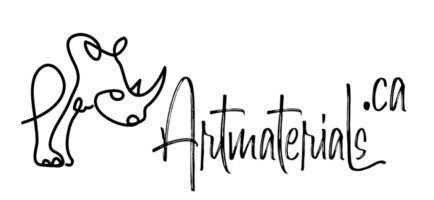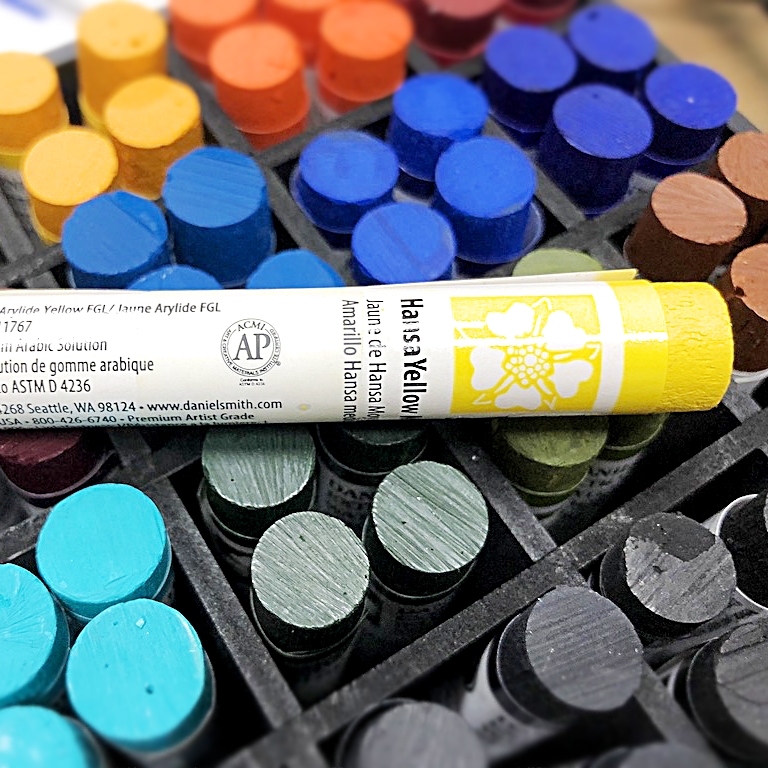Watercolours as any other medium have pigment and binder inside. Pigment is what brings colours, normally, in a powder from. And binder is kind of “glue” that holds pigment particles together. Of course, there many other additives that paints may contain, but we’ll talk about the key ingredients.
When it’s about professional watercolors, we have gum arabic as a binder. Generally speaking, there are several forms for the watercolour paints.
Forms of watercolours:
- Tubes. Most popular form for North America due to convenience of use and storage. Have more water and plasticizers than any other form of watercolours. Tubes are perfect for wet techniques and washes.
- Pans. More traditional semi-dry form, but requires more complicated manufacturing procedures and takes longer loner time to make than tubes. Have higher pigment load and work better for dry techniques.
- Gouache. It’s opaque watercolour that have a sour cream texture. Very appreciated by designers.
- Pencils. They look like any other pencil but different in use. A lead may contain some waxes and a lot of fillers, such as clays and others. Perfect for details, for combining graphic and painting techniques as well as for outdoor use. Less messy than any other form of watercolours.
- Sticks. Have the highest pigment load among all the forms. Let’s take a look what we can do with them.
How to use watercolour sticks
As watercolours in pans
You can simply use the sticks as watercolours in pans with higher pigment load. That means take some paint with a wet brush, and mix colours on your palette. When happy with the result, paint in dry or wet techniques.
As watercolour pencils
Draw on dry paper as if it’s a regular pencil. Add lines of different quality and manipulate the intensity of colour by pressure. Use a sharp edge for finer lines. Blend colours together right on the paper and soften with water. If needed, you can “sharpen” the sticks, collect the shavings and use them as watercolour in pans.
As crayons
Use the wide side of a stick and apply on rough paper. Then add water with a brush or splatter water drops for more creative look.
Dry on wet
Generously water your paper and add some touch with the sticks. With different amount of water used you can achieve incredible and unique look
And the last thing – based on price and signet load ratio, watercolour sticks are champions. In other words, for the same about of money paid you’re getting more valuable pigment per application than any other form of watercolours.



























